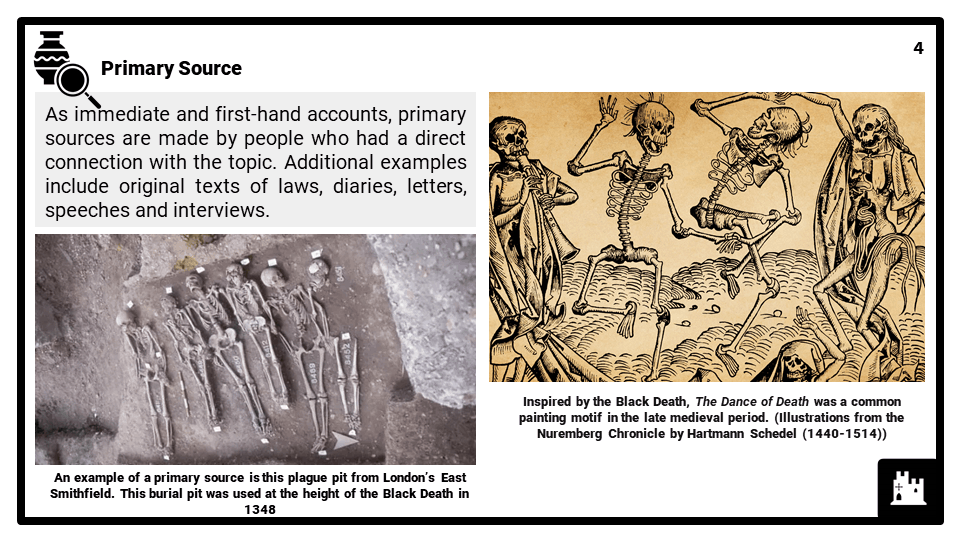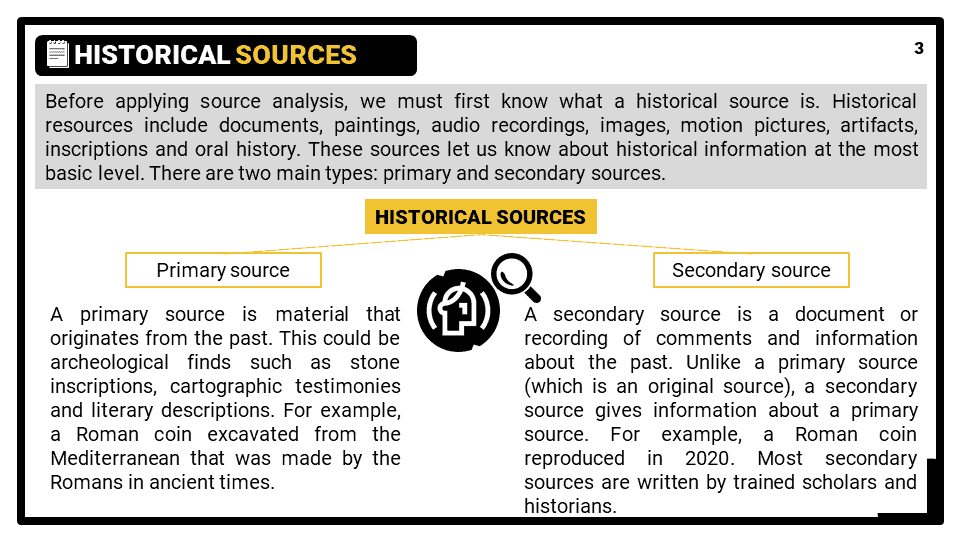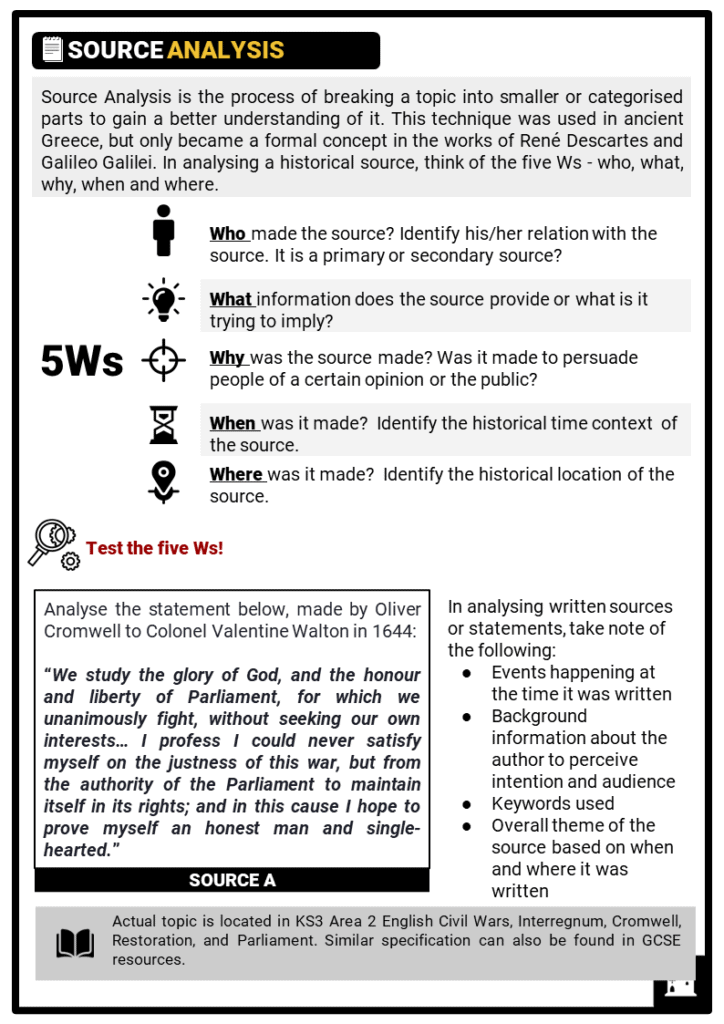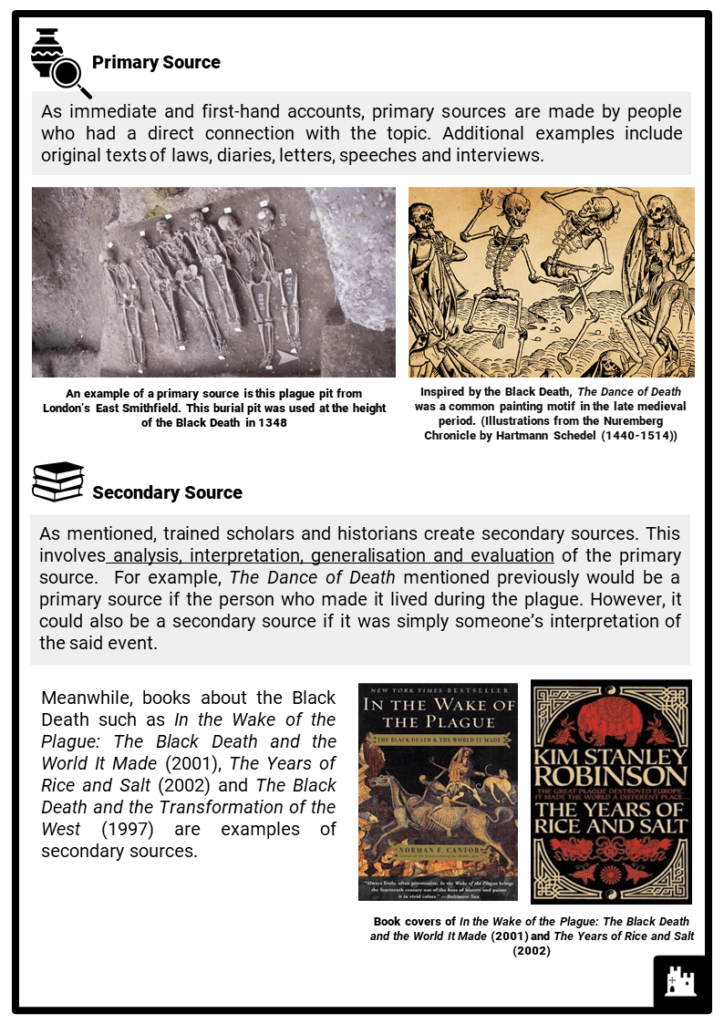Download Historical Key Skills: Source Analysis Materials
Do you want to save dozens of hours in time? Get your evenings and weekends back?
Our worksheet bundle includes a presentation and printable worksheets. Perfect for both the classroom and homeschooling!
Historical Source Analysis
This resource covers the key skill of SOURCE ANALYSIS as used in several topics, including:
- The Black Death
- The French Revolution
- The First and Second World Wars
- The Cold War
- China’s Qing Dynasty
- The Vietnam War
- Iron Age and Neolithic Revolution in Britain
- Elizabeth I
- The Civil Rights Movement
- Slavery and America
Excerpt
Before applying source analysis, we must first know what a historical source is. Historical resources include documents, paintings, audio recordings, images, motion pictures, artefacts, inscriptions and oral history. These sources let us know about historical information at the most basic level. There are two main types: primary and secondary sources.
A primary source is material that originates from the past. This could be archaeological finds such as stone inscriptions, cartographic testimonies and literary descriptions. For example, a Roman coin excavated from the Mediterranean that was made by the Romans in ancient times.
A secondary source is a document or recording of comments and information about the past. Unlike, a primary source (which is an original source), a secondary source gives information about a primary source. For example, a Roman coin reproduced in 2020. Most secondary sources are written by trained scholars and historians.
LEARNING OBJECTIVES
At the end of the module, students should be able to:
- Understand what historical sources are
- Use the five Ws in source analysis
- Be familiar with analysing written and image sources
RESOURCE CONTENT
- Types of historical sources
- Analysis of written and images sources
- Examples of source analysis in various topics
- Practice Assessment




